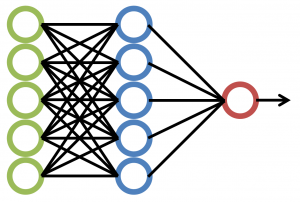ACADEMIA
SRL publishes machine learning section on predicting earthquake activity
With a growing wealth of seismic data and computing power at their disposal, seismologists are increasingly turning to a discipline called machine learning to better understand and predict complicated patterns in earthquake activity.
In a focus section published in the journal Seismological Research Letters, researchers describe how they are using machine learning methods to hone predictions of seismic activity, identify earthquake centers, characterize different types of seismic waves and distinguish seismic activity from other kinds of ground “noise.” {module In-article}

Machine learning refers to a set of algorithms and models that allow supercomputers to identify and extract patterns of information from large data sets. Machine learning methods often discover these patterns from the data themselves, without reference to the real-world, physical mechanisms represented by the data. The methods have been used successfully on problems such as digital image and speech recognition, among other applications.
More seismologists are using the methods, driven by “the increasing size of seismic data sets, improvements in computational power, new algorithms and architecture and the availability of easy-to-use open source machine learning frameworks,” write focus section editors Karianne Bergen of Harvard University, Ting Cheng of Los Alamos National Laboratory, and Zefeng Li of Caltech.
Several researchers are using a class of machine learning methods called deep neural networks, which can learn the complex relationships between massive amounts of input data and their predicted output. For instance, Farid Khosravikia and colleagues at the University of Texas, Austin show how one kind of deep neural network can be used to develop ground motion models for natural and induced earthquakes in Oklahoma, Kansas and Texas. The unusual nature of the growing number of earthquakes caused by petroleum wastewater disposal in the region make it essential to predict ground motion for future earthquakes and to possibly mitigate their impact.
Machine learning techniques could be used increasingly in the near future to preserve analog records of past earthquakes. As the media on which these data are recorded gradually degrades, seismologists are in a race against time to protect these valuable records. Machine learning methods that can identify and categorize images can be used to capture these data in a cost-effective manner, according to Kaiwen Wang of Stanford University and colleagues, who tested the possibilities on analog seismograph film from the U.S. Geological Survey’s Rangely earthquake control experiment.
Machine learning methods also are already in place in applications such as MyShake, to harvest and analyze data from the crowdsourced global smartphone seismic network, according to Qingkai Kong of the University of California, Berkeley and colleagues.
Other researchers are using machine learning algorithms to sift through seismic data to better identify earthquake aftershocks, volcanic seismic activity and to monitor the tectonic tremor that marks deformation at plate boundaries where megathrust earthquakes might occur. Some studies use machine learning techniques to locate earthquake origins and to distinguish small earthquakes from other seismic “noise” in the environment.


 How to resolve AdBlock issue?
How to resolve AdBlock issue?